A pig pen serves as a home for pigs, providing them shelter and protection from the elements. It is also essential in backyard farming, whether raising or selling pigs for personal consumption. Having a pig pen is that it can help keep your pigs healthy and safe. A well-built pen will prevent predators from attacking your animals and protect them from extreme weather conditions. Building a pig pen for backyard farming requires careful planning and execution.
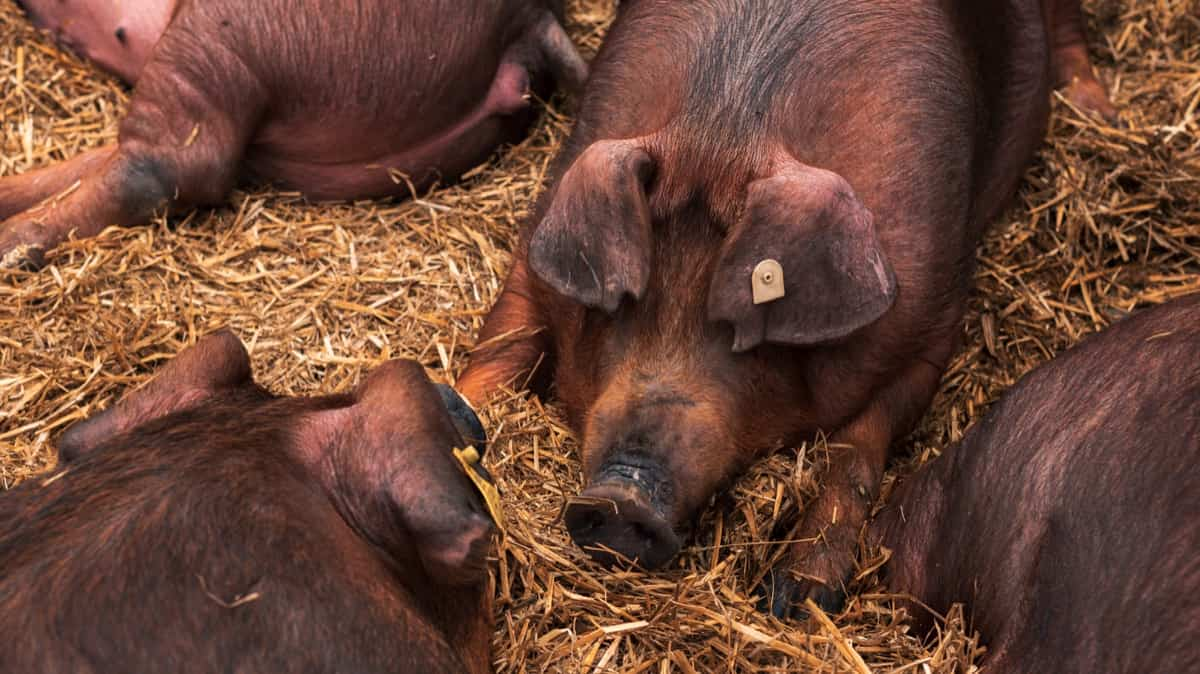
How to Build a Pig Pen for Backyard Farming
Materials Needed to Build a Pig Pen
- Firstly, you will need lumber to build a pig pen. You can use treated lumber or untreated wood if you plan on replacing it every few years. The amount of lumber required depends on the size of your pig pen.
- Next, ensure you have sturdy wire mesh or hog panels for fencing around your pen perimeter. This will help keep your pigs secure and deter predators from entering.
- You’ll also need a gate that can be locked to prevent any escape attempts by curious pigs.
- Don’t forget roofing materials such as corrugated metal sheets or tin roofs with gutters and downspouts for water drainage.
- For shelter inside the pen, hay bales or straw bedding can provide warmth and comfort for your livestock, especially during colder months.
- You will also require bedding comfortable enough for the pigs to lay on while absorbing their waste products. It’s advisable to use straw as it provides both comfort and hygiene.
- Feeders and waterers should be sturdy enough for durability because pigs can get very aggressive when feeding time arrives. Automatic watering systems work best in keeping water fresh and always available.
- Don’t forget about tools like hammers, nails, screwdrivers, etc., which are essentials when constructing anything made of wood or metal, including pig pens.
Flooring to Build a Pig Pen for Backyard Farming
- Pigs are messy animals, and their waste can quickly accumulate, so you must select a durable, easy-to-clean material and non-slippery for safety reasons.
- Concrete is the most popular type of flooring for pig pens as it is sturdy and long-lasting. It’s also relatively easy to clean with a hose or pressure washer. However, concrete can be slippery when wet, increasing the risk of injuries for your pigs.
- Another option is wood planks or decking boards. This flooring provides a natural feel but requires more maintenance than other materials. You’ll need to frequently replace damaged planks and ensure they’re sealed properly against moisture damage.
- Rubber mats are another alternative since they provide excellent traction while comfortably on your pigs’ feet. They’re also straightforward to clean with just soap and water.
In case you missed it: Disease Prevention and Management in Commercial Pig Farms
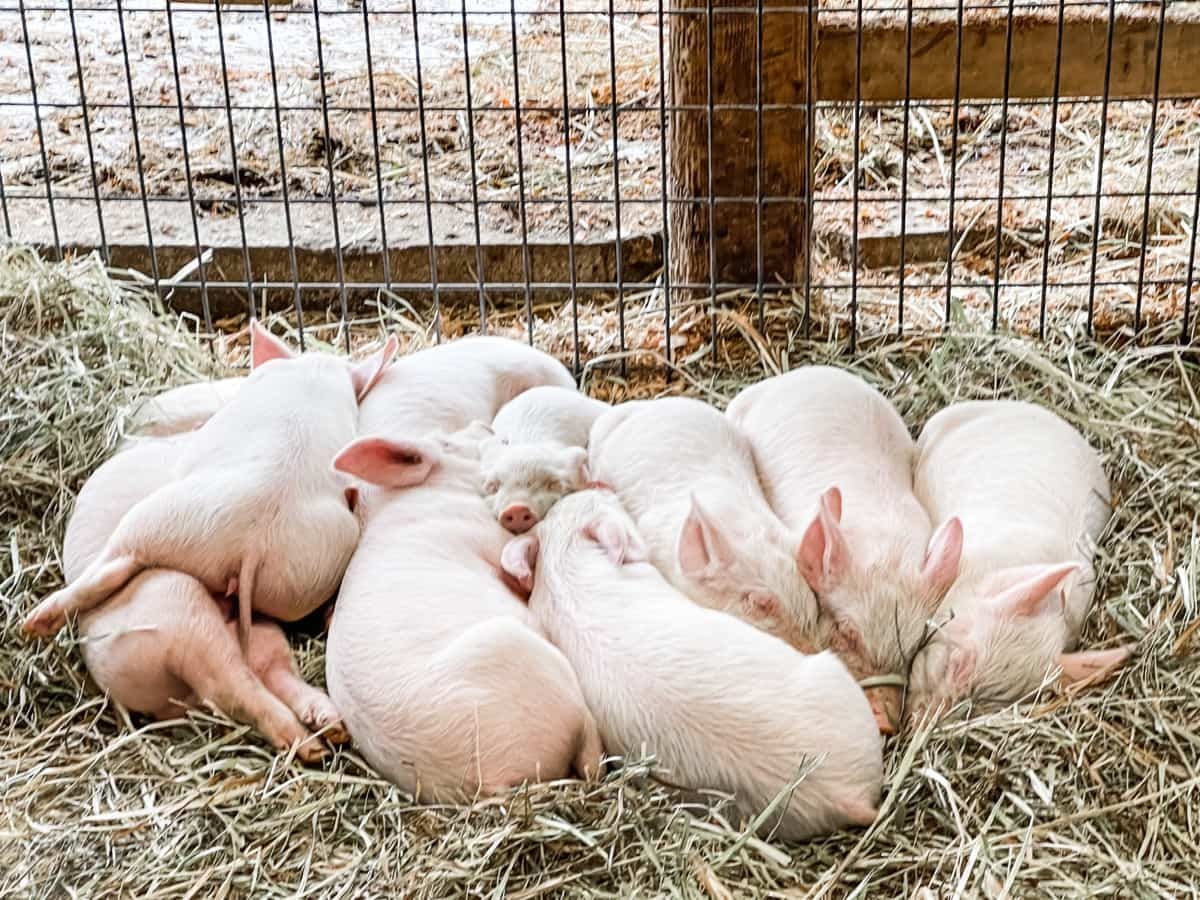
Fencing Options to Build a Pig Pen for Backyard Farming
Pigs are known for being escape animals and can easily break through weak or poorly installed fences. One option for pig pen fencing is woven wire. This type of fence has small holes that prevent pigs from escaping or sticking their heads through to eat nearby crops. Additionally, it’s durable and long-lasting, making it a great investment.
Another popular choice is electric fencing. While not as sturdy as woven wire, it’s an effective way to keep pigs contained without obstructing views of your property. Electric fences deliver a mild shock when touched by the animal, which trains them to avoid touching it in the future. If you’re on a tight budget, pallets can also be used as fencing material. They provide decent protection while keeping costs low but require regular maintenance and replacement.
Bedding to Keep Pigs Healthy
- The right bedding keeps your pigs clean and dry and provides a soft place to rest. One of the most popular options for pig bedding is straw. Straw is affordable, widely available, and easy to replace when soiled. It’s important to note that hay should not be used as pig bedding since it can cause respiratory problems.
- Another option for pig bedding is wood shavings or sawdust. These materials are absorbent and provide good insulation against cold weather. However, ensuring the shavings are not too fine is important since they can irritate your pigs’ eyes and respiratory systems.
- Some farmers prefer sand as pig bedding since it doesn’t retain moisture like other materials. Sand also helps keep hooves trimmed naturally as pigs move around on it.
- Another use of a pig pen is to control the waste produced by these animals. Pig manure contains high levels of nitrogen, which can be used as fertilizer in crops or gardens. Collecting the manure in one place creates an easy-to-use resource while reducing negative environmental impacts.
- Whatever bedding you select, regularly clean out any soiled areas and add fresh material as needed. Keeping your pigs’ living area clean will help prevent illness and ensure happy animals.
Feeders and Waterers to Keep Pigs Healthy
- Choosing the right feeder for your pig pen is important. You’ll want a sturdy feeder that can withstand rough treatment from the pigs and harsh weather conditions. A common type of pig feeder is a trough-style option which allows multiple pigs to eat at once.
- In addition, consider investing in automatic feeders that dispense food regularly throughout the day. This can help minimize waste while ensuring your pigs get enough nourishment.
- Next up are waterers – another crucial component of your pig pen setup. Water should always be available for your animals, and there are various types of water, including bowls or nipple drinkers.
- Make sure you clean out and change the water daily to keep it fresh, healthy, and free from any bacteria build-up, which could potentially harm your animals’ health. Remember how important it is to provide ample food and water sources for your livestock’s well-being.
In case you missed it: Pig Waste Management and Sustainable Manure Utilization
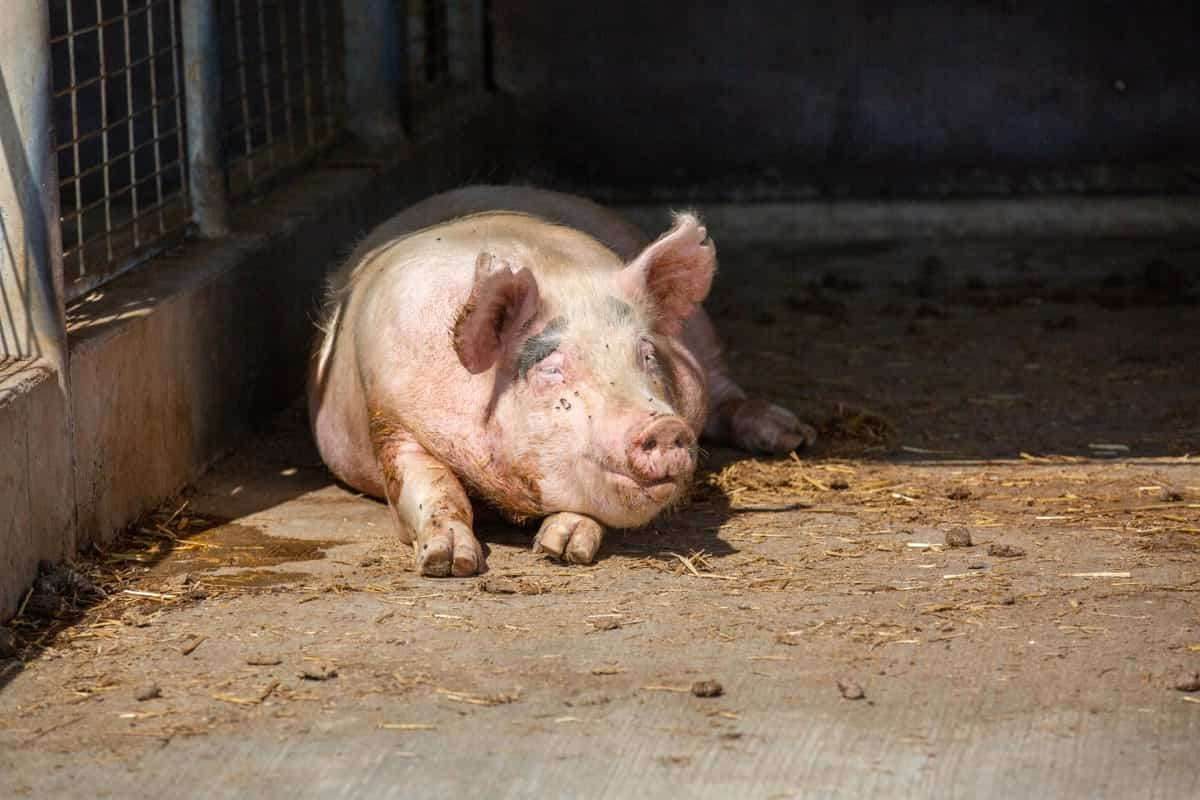
Step by Step Instructions to Build a Pig Pen for Backyard Farming
- Location: Choose a location that is easily accessible, well-drained, and away from residential areas.
- Fencing: Build a sturdy fence around your pig pen using strong materials like wood or metal sheets to keep the pigs and predators out.
- Shelter: Provide adequate shelter for your pigs by building a simple shed with enough space for them to move around comfortably.
- Water Area: Pigs need access to clean water at all times, so create a water area within their enclosure where they can drink and cool off.
- Pen Construction: When constructing your pig pen, always use high-quality materials that withstand harsh weather conditions and frequent use.
- Pen Maintenance: Regular maintenance of your pig pen is also crucial to ensuring its longevity and functionality. Clean the area regularly, provide fresh feed daily, refill the water source as needed, and monitor any signs of illness among your pigs.
- Install Bedding, Feeders, and Waterers: Provide bedding such as straw or wood shavings for insulation and comfort in colder weather conditions. Install feeders and waterers securely within easy reach from outside so food doesn’t get contaminated by feces or urine during feeding times.
Tips for Caring for Your Pigs
- Feed them correctly: Pigs need a balanced diet of grains, vegetables, and protein sources like soybean meal or fishmeal. Make sure pigs have fresh water available at all times.
- Keep the pen clean: Regularly remove any manure or soiled bedding from the pen to prevent odors and disease.
- Provide enrichment activities: Pigs are intelligent animals that get bored easily, so give them toys such as balls or hanging chains to play with.
- Monitor their health: Check your pigs regularly for signs of illness such as coughing, diarrhea, or loss of appetite. If you notice anything unusual, contact a veterinarian immediately.
In case you missed it: How to Build a Low-cost Pig House: DIY Steps, Barn Design, Shed Requirements, and Cheap Ideas
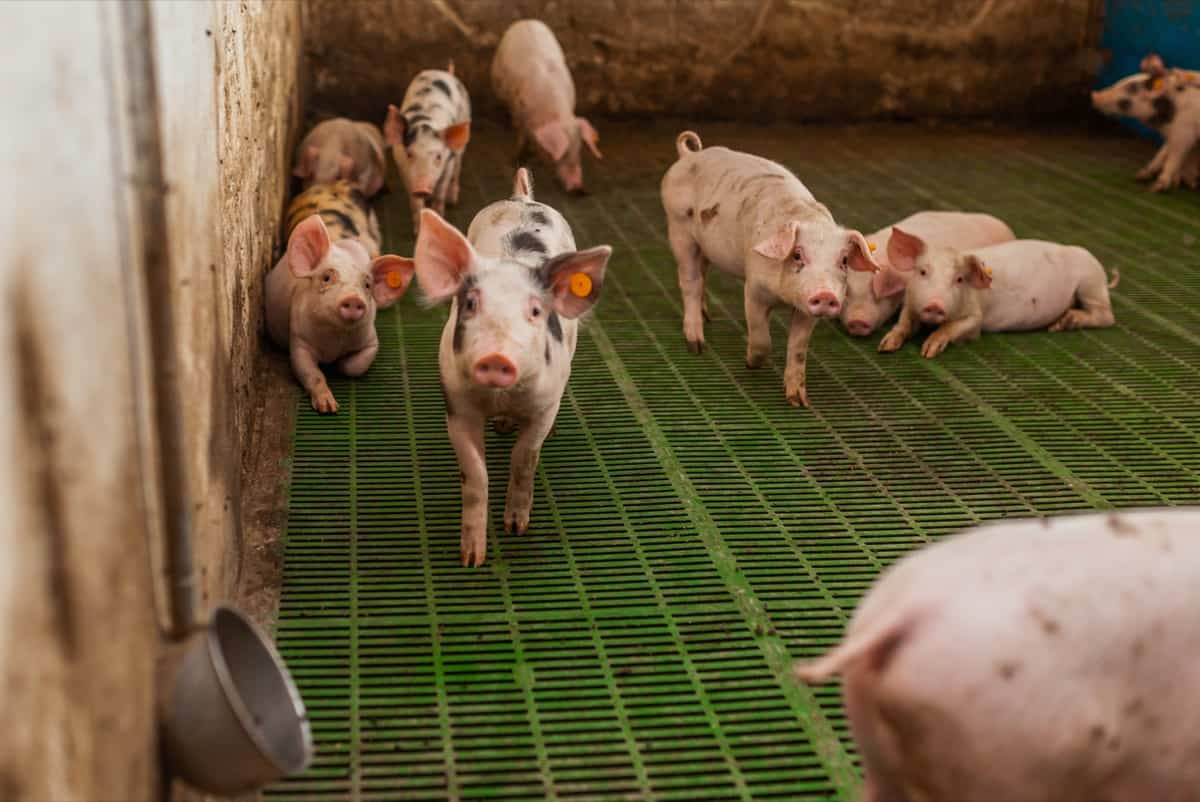
Tips for Maintaining Pig Pen
- Maintaining cleanliness in the pig pen is an important factor. Pigs are naturally messy animals, so cleaning their living area regularly is important. This helps prevent bacterial infections from developing and keeps your pigs healthy.
- Aside from clean surroundings, pigs always need access to fresh water. Ensure enough water is in their enclosure to drink whenever they’re thirsty.
- Always watch for signs of distress or illness among your pigs. Early detection and treatment of health issues will help ensure your animals stay healthy.
- Good drainage is crucial in maintaining hygiene in your pig pen area. To achieve this, you can install an underground drainage system or use raised flooring that allows liquid waste to drain away easily.
- Provide adequate shelter through a sturdy roofed structure with good ventilation. Remember that pigs need protection from both heat and cold weather conditions.
- Invest in good quality materials when building your pig pen. This will ensure that it is sturdy enough to withstand the weight and strength of adult pigs and protect them from predators.
- Another key factor in successful backyard pig farming is maintaining a clean environment for your pigs. Regularly cleaning their bedding area and providing fresh water will help keep them healthy.
The Perfect Pig Pen Setup for Pigs
- The perfect pig pen setup for pigs is crucial in ensuring the comfort and safety of your animals. The ideal pig pen should provide enough space for the pigs to move freely and a proper shelter to protect them from harsh weather conditions.
- When constructing a pig pen, it’s important to consider the materials used. Choose durable materials that can withstand rough use by the pigs. You can use wooden posts or metal pipes to create a sturdy frame.
- The flooring of your pig pen must be non-slippery and easy to clean. Concrete floors are commonly used, but you can also go for gravel or sand beds if you prefer natural options.
- Make sure there is enough ventilation within the pig pen. Proper ventilation helps regulate temperature and prevents stale air build-up, which may cause respiratory issues among your animals.
- Provide adequate water supply by installing automatic watering systems within the enclosure. This ensures that your pigs always have access to fresh water while minimizing labor requirements on your part. In addition, providing enrichment activities such as toys or outdoor play areas can help prevent boredom among your animals and promote their physical health.
In case you missed it: How to Build a Hydroponic Unit with PVC Pipes: DIY in Simple Steps
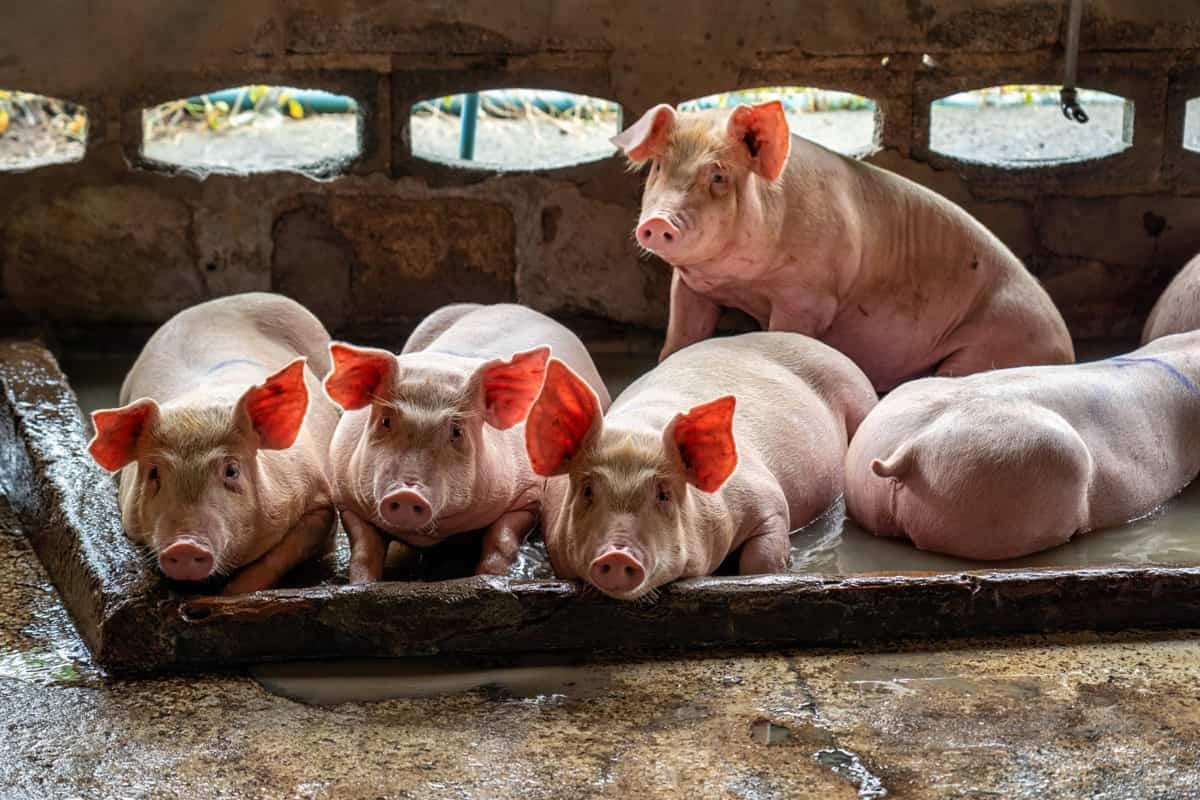
How Should Big My Pig Pen Be?
- The general rule is to allocate an 8′ x 16′ space per animal. A 16′ x 16′ pen will suffice if you plan to keep two animals together. However, this formula may vary based on the breed and size of your pigs.
- For instance, if you’re raising miniature breeds or potbelly pigs as pets rather than for meat production, you can build smaller pens around 6 feet by 8 feet each. On the other hand, larger pigs, such as Hampshire or Yorkshire breeds, require more space to move around comfortably.
- Another factor that affects pig pen size is their age and intended purpose. For young piglets under six months old who will eventually become full-grown hogs raised for meat production purposes, it’s essential to provide ample room for growth.
Cheapest Way to Build a Pig Pen
- When it comes to building a pig pen, there are various materials you can use. However, if you’re starting for an affordable option, free pallets could be the answer. Pallets are often discarded and can be easily found in many areas.
- Firstly, ensure that the pallets you choose are in good condition and not damaged. You will need to dismantle them carefully using a pry bar and hammer. Once dismantled, sort out the usable planks from those that cannot be used.
- Using these planks as walls of your pig pen is cost-effective since they don’t require additional purchases besides screws and nails to hold everything together. Additionally, they allow enough air circulation while keeping predators away from your pigs.
- It’s important that just because this method is cheap doesn’t mean you should compromise on your pig pen’s size or structure quality. Always ensure that your pigs have enough space by following guidelines for space per animal based on their breed.
In case you missed it: Pig Farming in Zimbabwe: Step-by-Step Starting Guide, Business Plan, Breeds, Setup Cost, and Profit
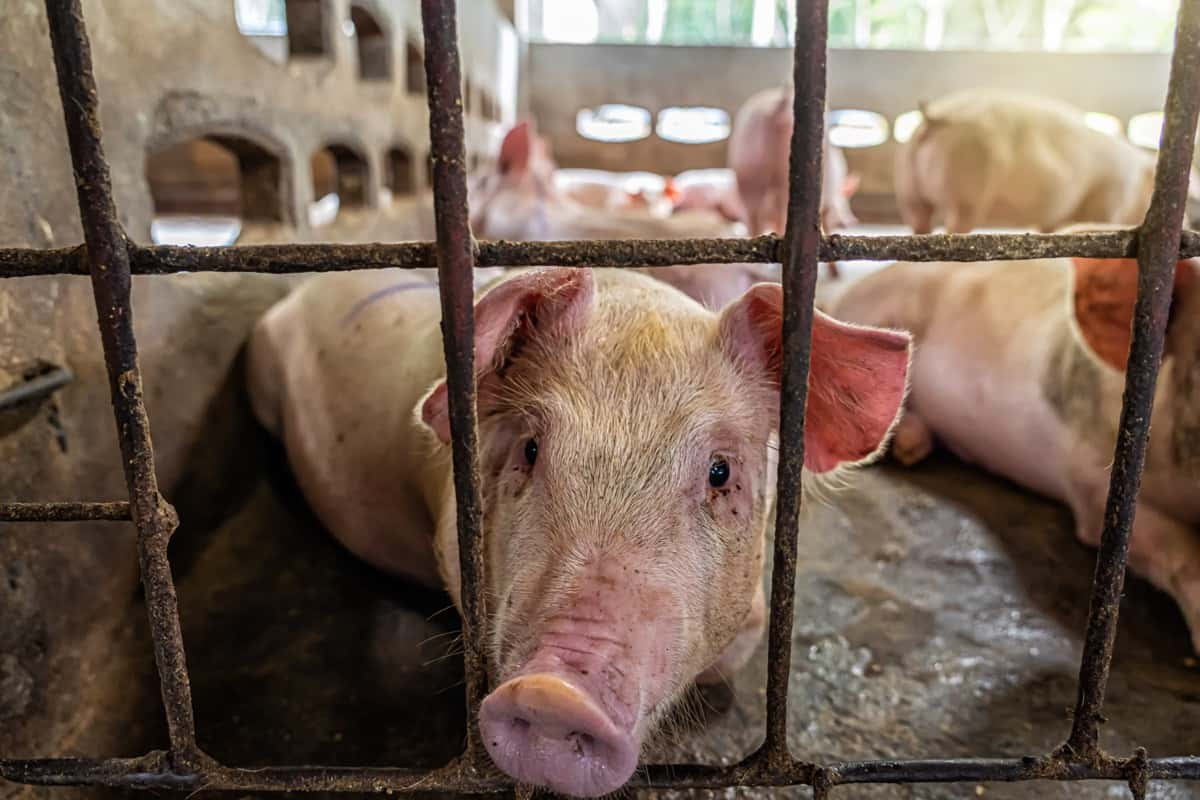
Conclusion
Owning a pig pen gives you complete control over raising your animals. You can select what kind of food they eat, what medical treatments they receive, and how much exercise they get each day, leading to healthier livestock overall. Moreover, a pig pen ensures that your animals are contained within a specific area to be easily monitored. This makes feeding, cleaning, and caring for your pigs much more manageable.
- Types of Pesticides Used in Agriculture: A Beginner’s Guide
- Economical Aquaculture: A Guide to Low-Budget Fish Farming
- 15 Common Planting Errors That Can Doom Your Fruit Trees
- How to Make Houseplants Bushy: Effective Tips and Ideas
- Innovative Strategies for Boosting Coconut Pollination and Yield
- Pollination Strategies for Maximum Pumpkin Yield
- The Complete Guide to Chicken Fattening: Strategies for Maximum Growth
- Natural Solutions for Tulip Problems: 100% Effective Remedies for Leaf and Bulb-Related Issues
- Revolutionizing Citrus Preservation: Towards a Healthier, Greener Future
- Natural Solutions for Peony Leaf and Flower Problems: 100% Effective Remedies
- Maximizing Profits with Avocado Contract Farming in India: A Comprehensive Guide
- Natural Solutions for Hydrangea Problems: 100% Effective Remedies for Leaf and Flowers
- The Ultimate Guide to Choosing the Perfect Foliage Friend: Bringing Life Indoors
- From Sunlight to Sustainability: 15 Ways to Use Solar Technology in Agriculture
- The Ultimate Guide to Dong Tao Chicken: Exploring from History to Raising
- The Eco-Friendly Makeover: How to Convert Your Unused Swimming Pool into a Fish Pond
- Mastering the Art of Delaware Chicken Farming: Essentials for Healthy Backyard Flocks
- 20 Best Homemade Fertilizers for Money Plant: DIY Recipes and Application Methods
- How to Craft a Comprehensive Free-Range Chicken Farming Business Plan
- Brighten Your Flock: Raising Easter Egger Chickens for Beauty and Bounty
- How to Optimize Your Poultry Egg Farm Business Plan with These Strategies
- Subsidy for Spirulina Cultivation: How Indian Government Schemes Encouraging Spirulina Farmers
- Ultimate Guide to Raising Dominique Chickens: Breeding, Feeding, Egg-Production, and Care
- Mastering the Art of Raising Jersey Giant Chickens: Care, Feeding, and More
- Ultimate Guide to Raising Legbar Chickens: Breeding, Farming Practices, Diet, Egg-Production
- How to Raise Welsummer Chickens: A Comprehensive Guide for Beginners
- How to Protect Indoor Plants in Winter: A Comprehensive Guide
- Ultimate Guide to Grow Bag Gardening: Tips, Tricks, and Planting Ideas for Urban Gardeners
- Guide to Lotus Cultivation: How to Propagate, Plant, Grow, Care, Cost, and Profit
- Agriculture Drone Subsidy Scheme: Government Kisan Subsidy, License, and How to Apply Online
- Ultimate Guide to Raising Araucana Chickens: Breed Profile, Farming Economics, Diet, and Care
- Bringing Hydroponics to Classroom: Importance, Benefits of Learning for School Students
- Ultimate Guide to Raising Polish Chickens: Breed Profile, Farming Economics, Diet, and Care
- Ultimate Guide to Raising Australorp Chickens: Profile, Farming Economics, Egg Production, Diet, and Care
- Silkie Chicken Farming: Raising Practices, Varieties, Egg Production, Diet, and Care
- Sussex Chicken Farming: Raising Practices, Varieties, Egg Production, Diet and Care